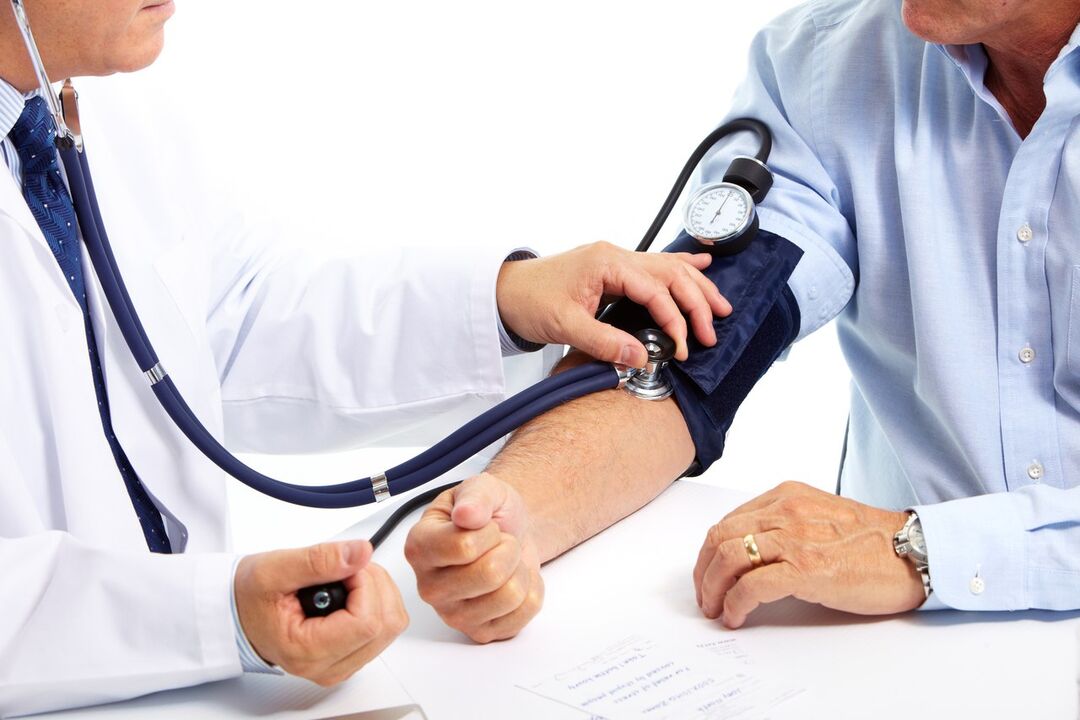
Everyone has heard of heart attacks and strokes - we are afraid of them and try with all our might to avoid them. And yet these are the most common causes of death in hypertension and high blood pressure.
Arterial hypertension or high blood pressure is the most common and widely recognized diagnosis. Although, according to statistics, one in three suffers from this disease, much remains unclear, including the causes and treatment. How to prevent all these problems? How do you maintain health and quality of life? In this article we will try to answer these questions.
High blood pressure (hypertension) – what is it?
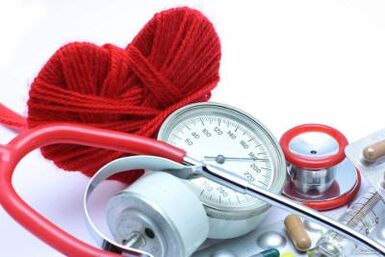
According to the currently accepted classification, arterial hypertension is an increase in blood pressure over 140/90 mm. rt. Art. Today there are two forms of high blood pressure:
- primary (or essential, i. e. the cause is unknown) – characterized by an increase in blood pressure for no apparent reason;
- secondary (symptomatic) – the cause of increased blood pressure is related to all internal organs (liver, kidneys, lungs, brain, endocrine glands).
As the name suggests, the cause of essential hypertension is not clear, despite all the achievements of modern medicine. Therefore, the only traditional method of treatment remains eliminating high blood pressure with pills. And since pills only alleviate the consequences without eliminating the cause, the importance of hypertension in the modern world is clearly felt. However, a group of medical researchers has developed a new concept of the development of high blood pressure, which explains the disease mechanism at the cellular level and is confirmed by numerous studies. We will talk about this innovative approach.
First, any disease is a dysfunction of the body. And since our large and well-coordinated body is made up of cells, all the functions of the body are carried out by them, small cells.
Microlife invisible to the eye is always present in the body - some cells die, others are newly formed. The body's job is to maintain a balance between functioning and dead cells. The immune system is involved in this task - special macrophage cells act as cleaners - their job is to find and remove such biowaste in a timely manner. If the body's immune system cannot cope with a critical mass of dead cells or if a cell no longer performs its tasks normally for various reasons, the balance becomes unstable and illness occurs.
When does uncontrolled cell death occur and when does the cell not fulfill its functions? The answer is simple: when the cell itself lacks resources. By resources we mean everything that has to be obtained from outside so that the cell can fulfill its function. To maintain its function and "clean" waste products, each cell constantly interacts with the intercellular fluid, which, in turn, restores and renews its composition through contact with blood. The blood receives resources, including from the external environment: the lungs produce oxygen, the digestive system– Nutrients in the form of water, fats, carbohydrates and proteins.

In order for this complex system to function and the body has time to get rid of damaged cells and replace them with new ones, a resource is required that puts all this into action, sets it in motion. One such resource is microvibration, which occurs in the body through the work of muscle cells (myofibrils). Microvibrations are always present in the body, even during sleep. Even with maximum relaxation, many muscle cells continue to work and generate micro-vibrations in the intercellular fluid surrounding them.
It is known that about 60% of the body's cells are muscle cells and consume more than 80% of all energy produced in the body. And almost half of this energy expenditure is necessary to maintain the level of micro-vibration at rest or the micro-vibration background. Such colossal energy expenditures do not arise without reason, they are necessary for human life. The absence of micro-vibrations in the body means death, and their lack means illness.
Likewise, in the case of high blood pressure, if there is a lack of micro-vibration in the body for a long period of time, the cells begin to perform their function much more poorly, which means that the tissue begins to "waste" and the functional cells function worse and die. This affects theFunctioning of vital organs - the kidneys; problems arise in the spine, which leads to a deterioration in the blood supply to the brain and spinal cord. And problems with these organs are the most common causes of hypertension and, in general, a decrease in the tone of the whole organism.
High blood pressure and high blood pressure – what are the differences?
In the medical world there are so many terms and labels that sometimes it is very difficult for a normal person to understand and understand what is happening to his body. What do all these abbreviations and diagnoses mean? First, let's define what the difference is between high blood pressure and high blood pressure. What is the difference?
Hypertension is a disease involving high blood pressure. And hypertension is already a disease that affects the entire body and whose symptoms include high blood pressure. The extent of organ change that causes high blood pressure is the stage of the disease.
In the modern, accepted medical classification, there are 3 degrees of arterial hypertension:
Type of blood pressure and degree of hypertension |
Systolic blood pressure, mm Hg. Art. |
Diastolic blood pressure, mm Hg. Art. |
|---|---|---|
Normal |
Less than 130 |
Less than 85 |
High |
130-139 |
85-89 |
Grade I high blood pressure (mild) |
140-159 |
90-99 |
II degree of hypertension (moderate) |
160-179 |
100-109 |
Hypertension grade III (severe) |
Greater than or equal to 180 |
Greater than or equal to 110 |
Complications and consequences of high blood pressure
In order to understand exactly how constantly elevated blood pressure leads to terrible complications, what kind of disease high blood pressure is and why exactly it is dangerous, let's consider the mechanism of development (pathogenesis) of high blood pressure.
Long-term high blood pressure (hypertension) often leads to irreversible consequences, especially in the vascular bed:
- Thickening of the walls of blood vessels, reducing their elasticity;
- permanent narrowing of the lumen of small arteries of blood vessels;
- thickening of the heart muscle (myocardium);
- increased damage to the walls of blood vessels due to high blood flow rates, formation of atherosclerotic plaques at the sites of damage.
Since the vascular system is actually the supplier and carrier of external resources, let's see what happens to it with persistent hypertension. Normally, the wall of blood vessels is elastic, which allows the body to quickly adapt to constantly changing conditions. However, with constantly high pressure and a lack of micro-vibration, the vascular wall thickens and loses its elasticity. This happens mainly because the body suffers from a lack of microvibration for a number of reasons (physical inactivity, poor diet, obesity, etc. ), the immune system does not have time to "recycle" dead cells, and living cells cannot do their jobfully fulfill. The body is forced to urgently get rid of non-functioning and dead cells. One way to get rid of them is to convert them into a stable structure - connective tissue or fibrosis. Fibrosis in the walls of blood vessels, in turn, significantly reduces their elasticity and strength, which can lead to vascular injuries and bleeding. This situation is particularly dangerous in the brain as it can lead to a stroke.
In addition, most organs do not require high pressure at all and a defense mechanism is activated - a spasm (narrowing) of small arteries to reduce blood flow through them. This simply wastes enormous amounts of resources from the entire body, which cannot last long. Therefore, in order to save resources, the walls of the blood vessels thicken again and muscle cells are replaced by connective cells, which makes a reverse increase in the lumen of the blood vessels impossible.
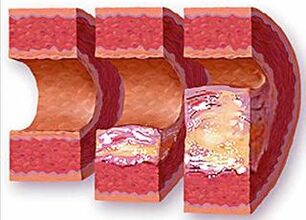
This inflexibility of the vascular wall leads to the formation of microtraumas to the wall and the deposition of cholesterol there. This causes the vessel to narrow in a certain area. This means that organs and tissues do not receive their share of nutrients and therefore cannot fully fulfill their function. The heart, in turn, is forced to work with increased force to pump blood through such inelastic (narrowed) vessels, which means that it has no choice but to increase the mass of heart cells - myocytes. This condition is called myocardial hypertrophy. And everything seems to be fine, but the coronary arteries that are supposed to feed the heart do not enlarge and a so-called lack of myocardial blood supply occurs - ischemia. And if an atherosclerotic plaque grows on the altered wall of the coronary artery, there is a high risk that the blood supply to the myocardium in this area will be completely disrupted - the death of a part of the myocardium will occur - a heart attack.
Stroke, heart attack and arteriosclerosis are the most common complications of high blood pressure and causes of instant death.
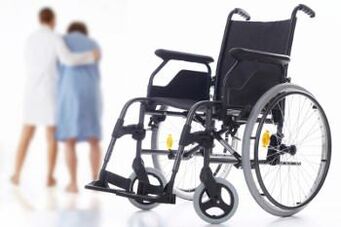
Can you become disabled if you have high blood pressure?
Disability is the inability to carry out normal household activities and care for oneself. As hypertension progresses, when all the body's resources are exhausted, the development of heart failure begins. From the name it is clear that in this state the heart simply cannot perform its main function - supplying organs and tissues with oxygen. When heart failure becomes critical, a person suffers a significant loss of quality of life, and even putting a kettle on in the kitchen is tantamount to a heroic act. Under such conditions, a person naturally experiences disability due to hypertension.
Conditions and causes of high blood pressure
What are the main causes of high blood pressure? What triggers this entire cascade of reactions and what causes the disease?
Our body, as already mentioned, is an internal universe made up of billions of cells that all function as a single unit. The incredible processes of self-regulation of this universe allow a person to live and survive in environmental conditions. Everything that happens in the body is not a coincidence and is caused by something, it is needed for something.
To understand what can cause high blood pressure in a person, we need to go back to the cells. For every cellular process it is necessary that cellular components (proteins, fats, carbohydrates) can meet in space. The already known micro-vibration of the surrounding interior plays a major role. If there is a lack of micro-vibration, cell function is initially disrupted, which subsequently leads to a disruption in the nutrition of the spinal cord, kidneys, brain and, ultimately, to the development of high blood pressure. At the same time, it is important to understand that this is necessary for some reason when the body increases blood pressure. It would be more correct to say – vital! However, the causes of high blood pressure are largely similar in men and women.
Inadequate kidney function
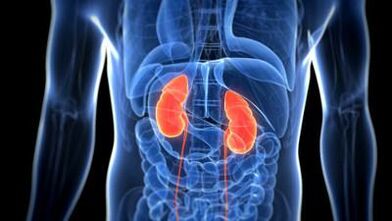
The kidneys are the only human organ that physiologically requires high blood pressure because the blood must flow under pressure through special membranes to purify it. At a pressure below 80 mm Hg. Art. The kidneys stop filtering (purifying) the blood and this is fatal.
Therefore, under no circumstances can the body allow the kidneys to reduce or stop filtering. If for some reason the kidneys cannot cope with filtering (purifying) the blood, the brain receives a command to increase blood pressure in order to increase the productivity of the kidneys. This is one of the most common causes of high blood pressure.
In this case, the kidneys themselves are fine, but the general "contamination" of the blood may exceed the ability of the kidneys to clean it at normal pressure. Therefore, the body needs to increase the performance of the kidneys by increasing blood pressure.
In this case, it is enough to improve kidney function and the pressure normalizes. And the function of the kidneys can be improved by providing the cells with nutrients more intensively and cleaning them from waste products. To do this, it is enough to increase microvibration (microcirculation) in the kidney area. In addition, the kidneys are one of the few organs that do not have their own muscle fibers and therefore receive microvibrations from the working neighboring abdominal and back muscles. From this perspective, it becomes clear how lack of exercise, poor posture and an increase in the proportion of fatty tissue lead to a deterioration in kidney function and, as a result, high blood pressure. Therefore, in order to improve the functioning of the kidneys and break this entire chain, we again come to the conclusion that it is enough to normalize the level of microvibration of the kidneys.
There is currently only one device in the world that can specifically increase micro-vibration in any human organ. We are talking about a unique development - medical devices for vibroacoustic effects and a method - phonation.
The effectiveness of treating high blood pressure with these devices has been confirmed by many studies.
Impaired blood supply to the brain
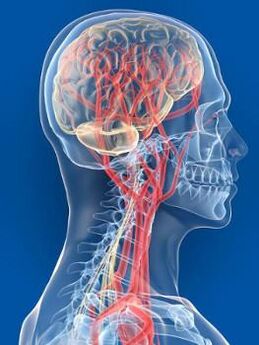
Another cause may be a disruption in the blood supply to the brain or spinal cord due to narrowing or pinching of the arteries. This can occur as a result of problems in the spine (osteochondrosis, intervertebral hernia) or congenital features of the vascular bed, which can worsen over time due to atherosclerosis.
The body cannot allow the blood supply to the brain to be interrupted and therefore increases the pressure to push the required amount of blood through the existing narrowed vessels.
Then, if the problem with the blood supply to the brain or spinal cord is corrected, the pressure may decrease. Vibroacoustic therapy with devices can also be used for this purpose. With the help of special transducers (vibraphones), the mechanical micro-vibration of the device is transmitted into the human body through contact to a depth of 10 cm and leads to increased microcapillary blood and lymph flow. And this, in turn, leads to improved nutrition of cells and timely removal of their waste products.
So, with the help of phonation, it is possible to eliminate swelling of the spine due to osteochondrosis or intervertebral hernias, thereby "unblocking" pinched arteries and improving blood supply to the brain.
eating disorder
The overload of the body with simple carbohydrates, fats, alcohol, nicotine, etc. leads to the fact that enormous resources are spent on their disposal (neutralization and purification), and as a result the body simply does not have time to restore cellular balance in the vascular systema lack of resources that leads to the development of high blood pressure. All of these factors mean that young organisms also suffer from a lack of resources and in the modern world we are increasingly faced with high blood pressure in young people.
Hormonal disorders
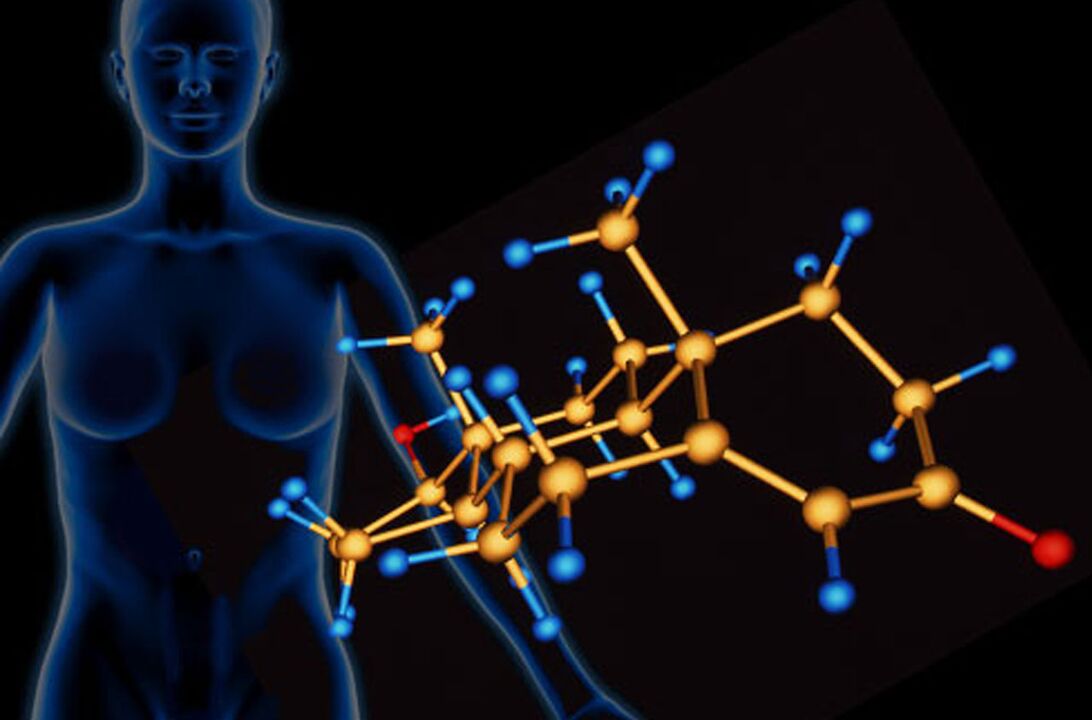
It is absolutely known that hormone levels have a significant impact on blood pressure. In the body, there is a complex interaction between the entire endocrine system, which includes glands in the brain (pituitary gland and hypothalamus) and glands in the rest of the body (thyroid, parathyroid, reproductive gland). These glands are normally supposed to ensure the balance of the body's internal environment, including the constancy of blood pressure. With a lack of microvibration, as we have already found out, nutrition and all vital functions at the cellular level suffer, which means that with a lack of microvibration, the entire endocrine system is affected, which, by the way, is very sensitive to a lack of nutrients, will work incorrectly and intermittently. Hormone levels are disrupted and blood pressure "jumps". It is enough to normalize blood supply and improve microvibration of the endocrine glands for hormone levels to return to normal.
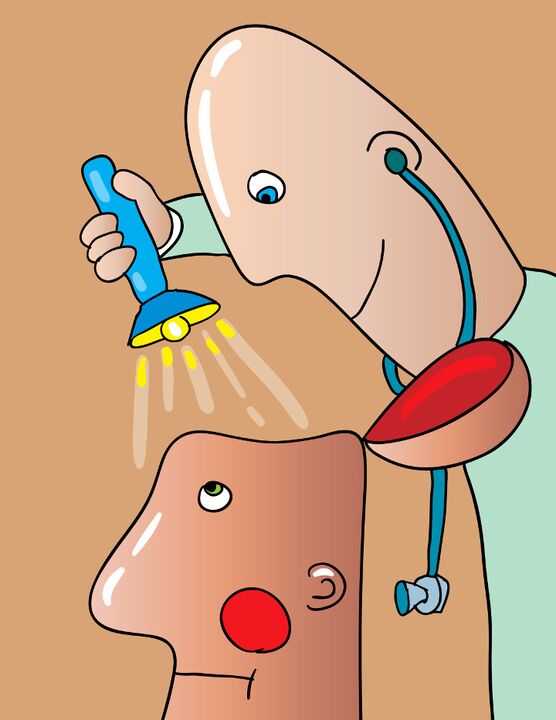
Psychosomatics
In our fast-moving times, we should not forget the so-called psychosomatics and its contribution to hypertension. The fact is that with constant psychological stress, a sea of biological agents is released into the blood, which increase vascular tone and pressure. Constant stress and strong negative emotions lead to increased muscle tone, as a result of which the body's resources are soon depleted and all body functions decline, which creates the conditions for the development of diseases. In this case, it is necessary not only to normalize the microvibration background, but also to pay close attention to the emotional component.
Age characteristics
An exception is hypertension at a young age, in children and adolescents. In these cases, endocrine (hormonal) disorders or diseases of the spine are usually the cause. At the same time, drugs for "adults" cannot always cope with hypertension in this group of patients without harming the child's body. Therefore, the task arises of using methods to reduce the doses of drugs used. One such method is phonation. The effectiveness of reducing theStudies have confirmed the dosage of medication or even the avoidance of it.
Hypertension in the elderly also has its own characteristics, because. . . Choosing the dosage of drugs due to concomitant diseases can be very difficult, and often the doctor finds himself in a kind of "fork" - when the prescription of drugs to lower blood pressure leads to a deterioration in the functioning of other organs. And in this case canphonation remedy that is safe and effective in older patients.
Phonics is a modern, effective, non-drug method for treating and preventing high blood pressure
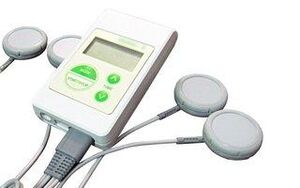
The effectiveness of the method is confirmed by medical research, clinical practice and reviews of doctors. The treatment and prevention of high blood pressure is carried out using compact medical devices with vibroacoustic influence. The advantage of the method is the ability to carry out procedures independently at home, as well as the absence of side effects and a small number of contraindications.





























